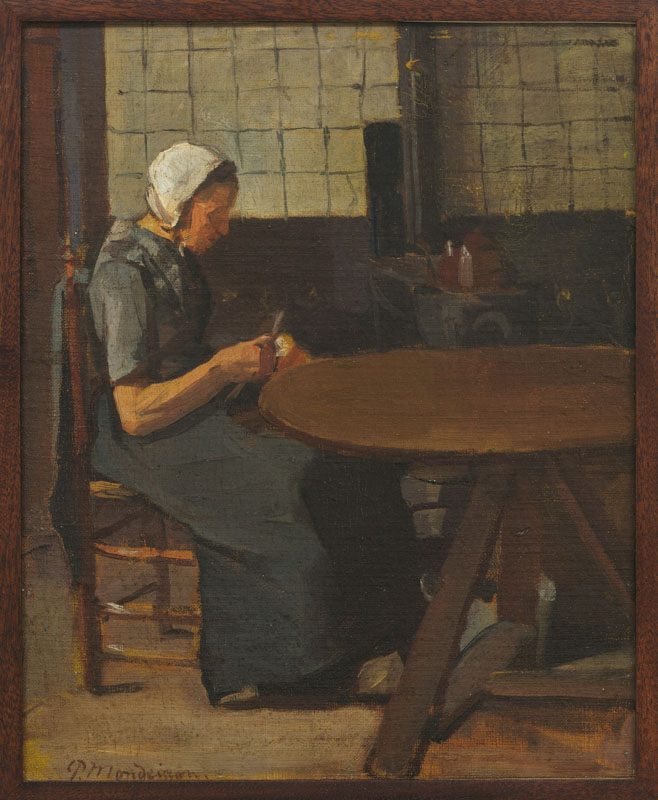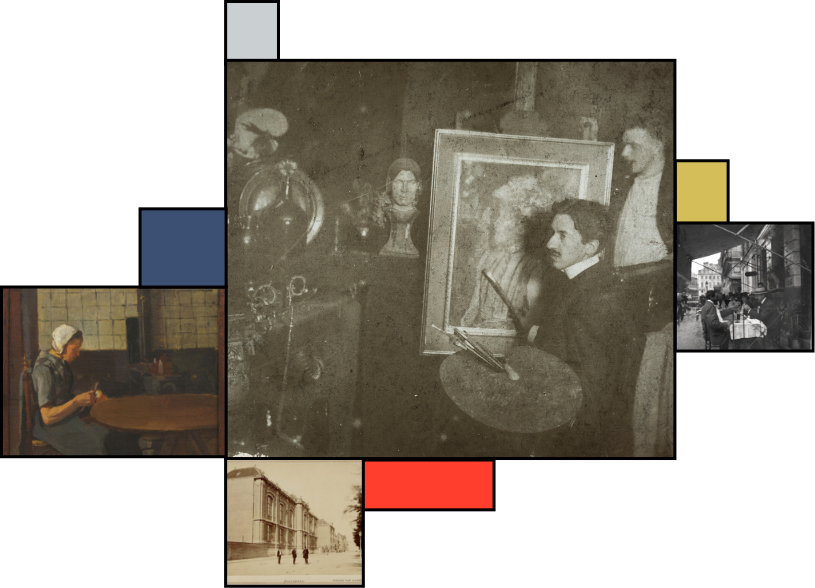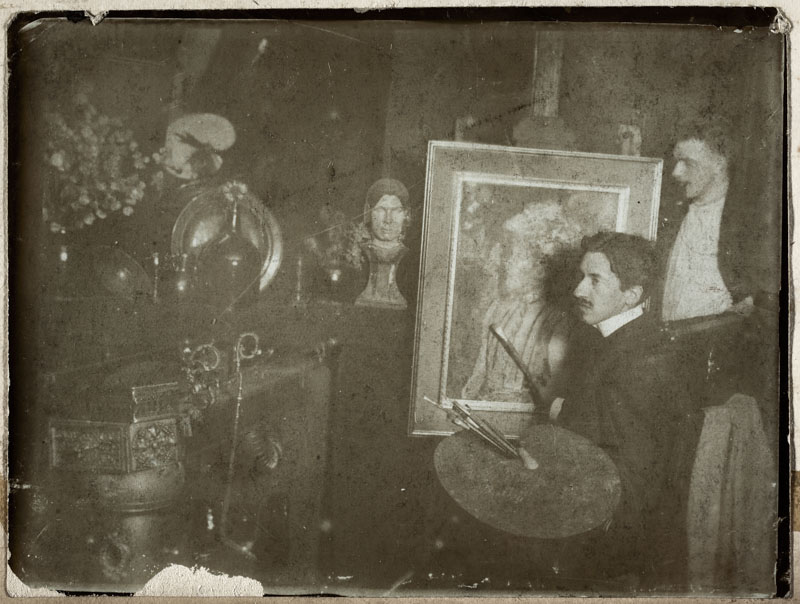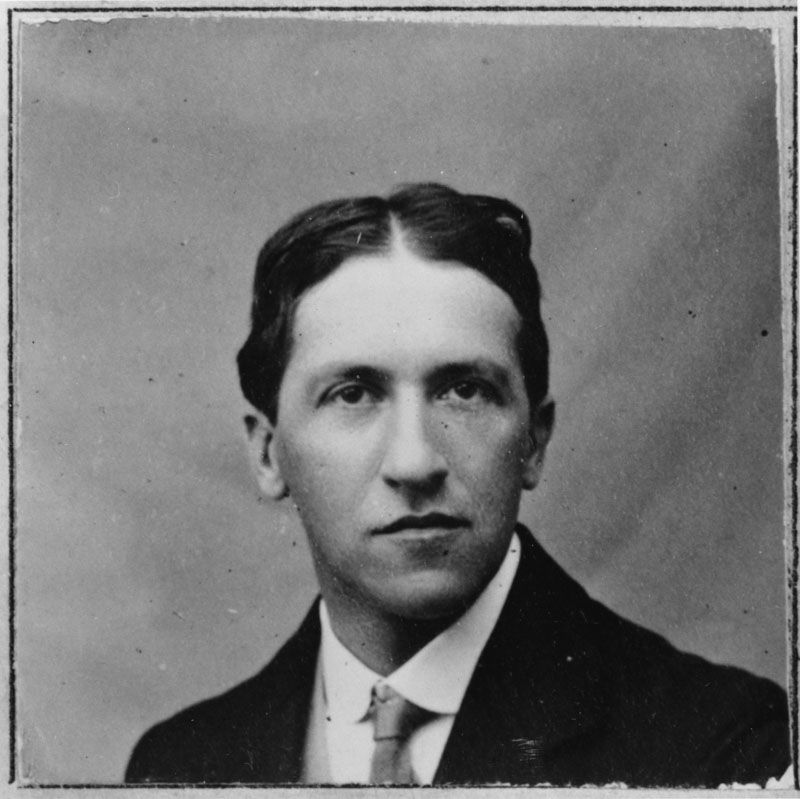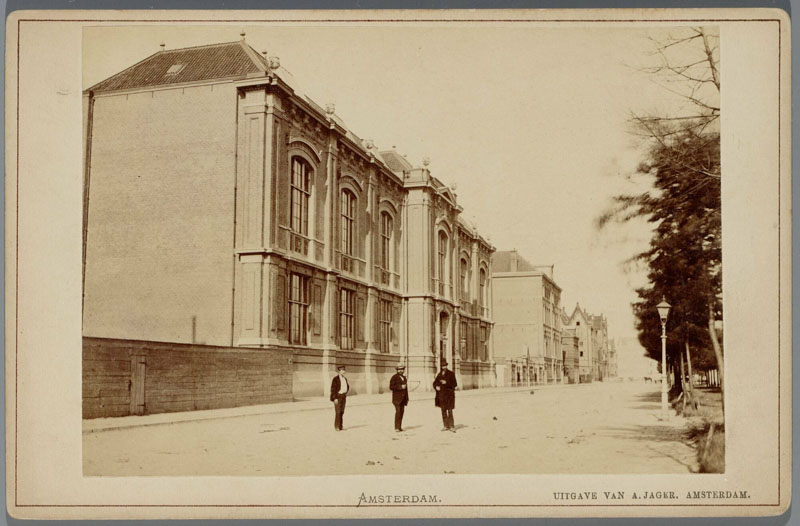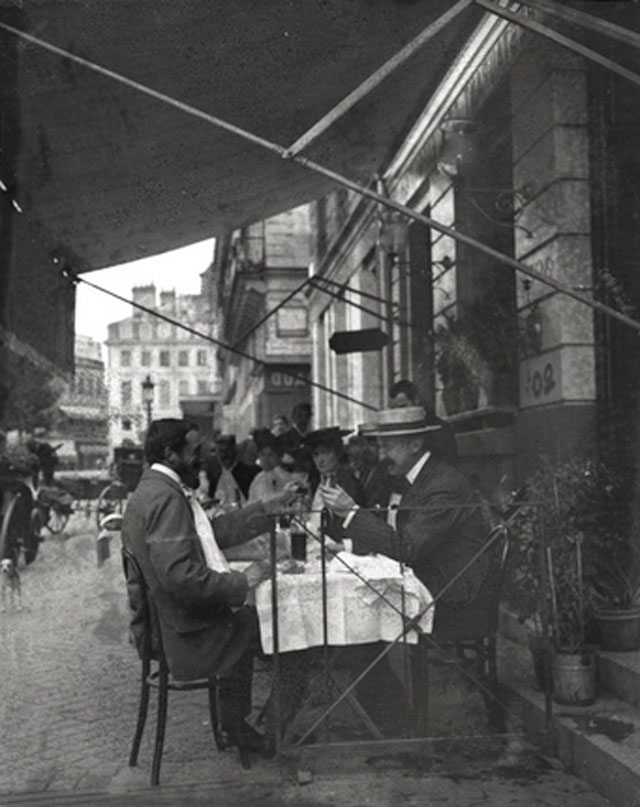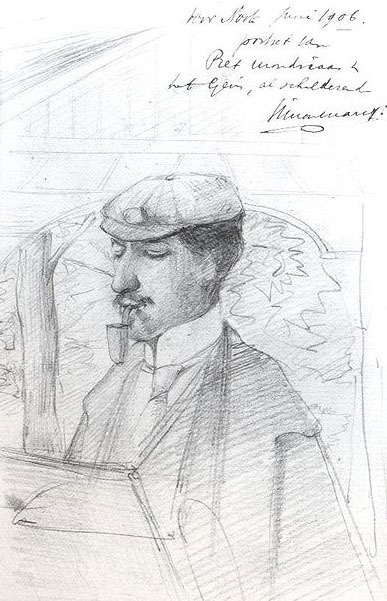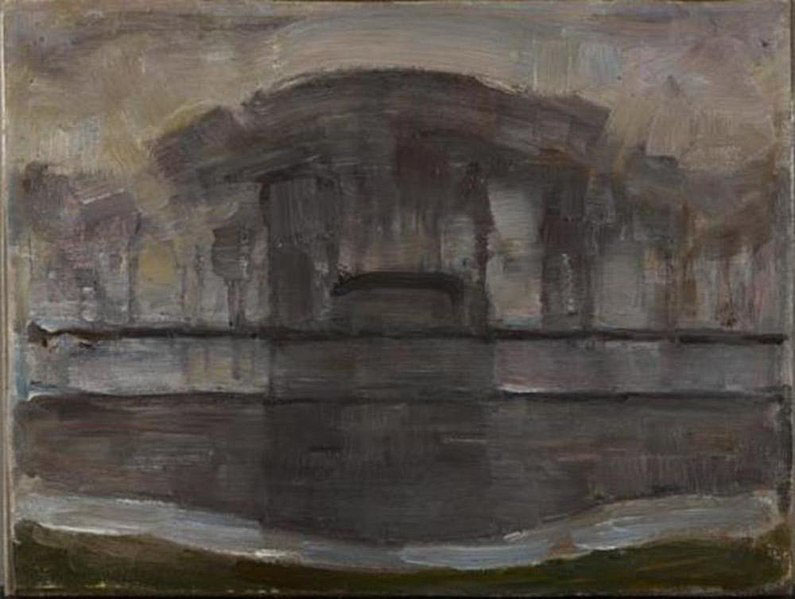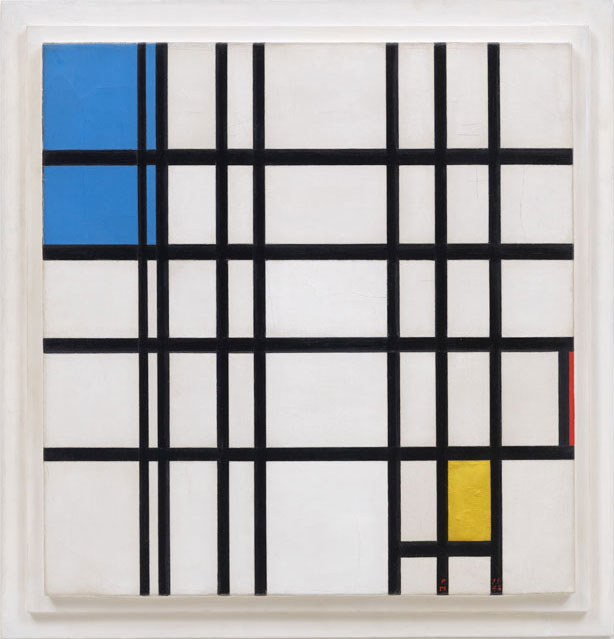The Hague School
As a young man, Piet Mondrian is influenced by the style of the so-called Hague School, known for naturalistic landscapes in earthy colors. The rather conservative depictions are considered the epitome of Dutch landscape painting at the time.
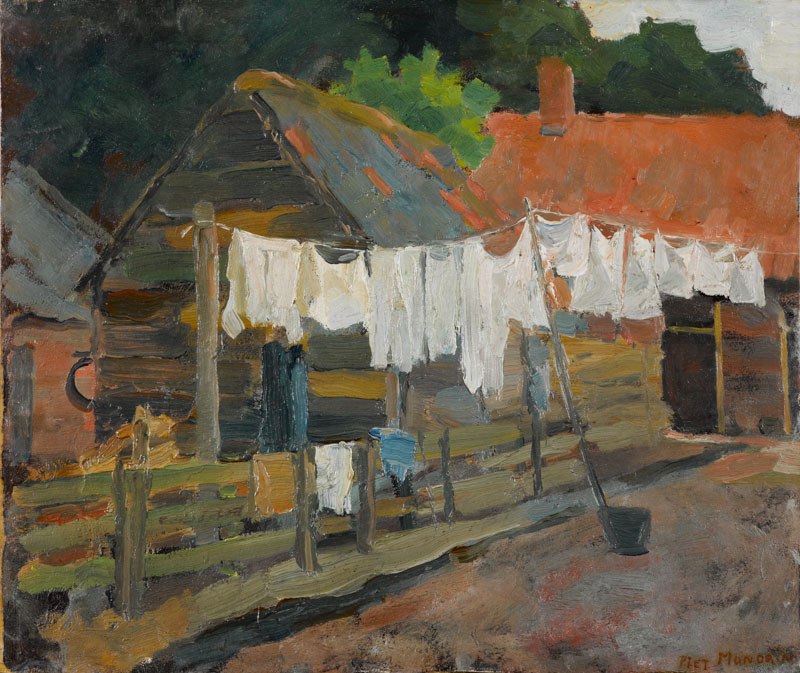
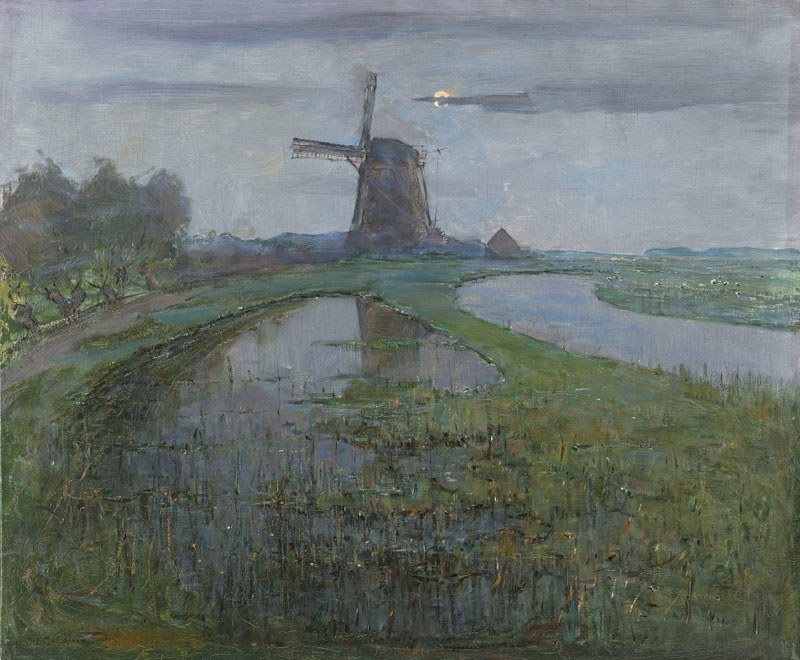
Mondrian often paints the small river Gein near Amsterdam and is interested in the reflections in the water. In several paintings, he moves the horizon very far up, giving him plenty of space to explore the relationship between the motif, surface, and space.
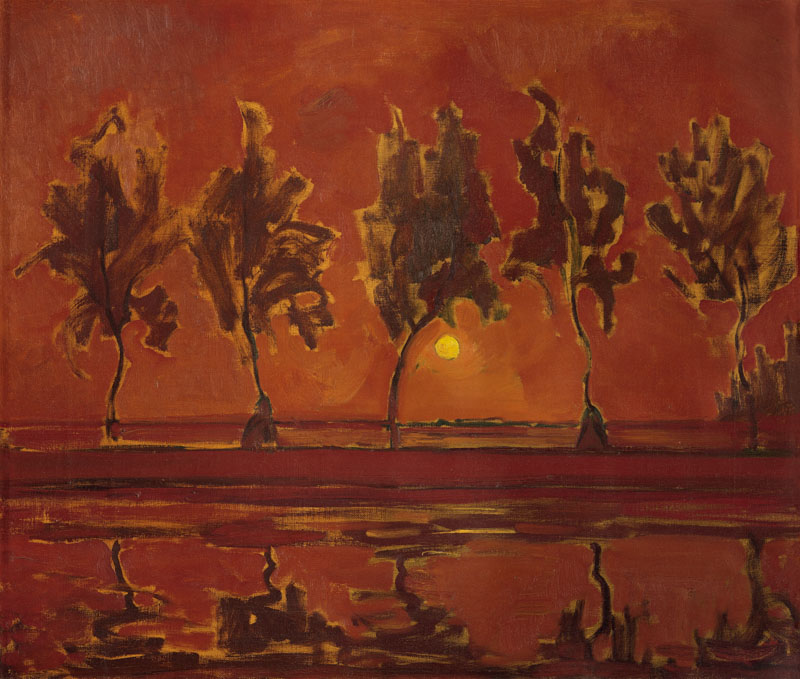
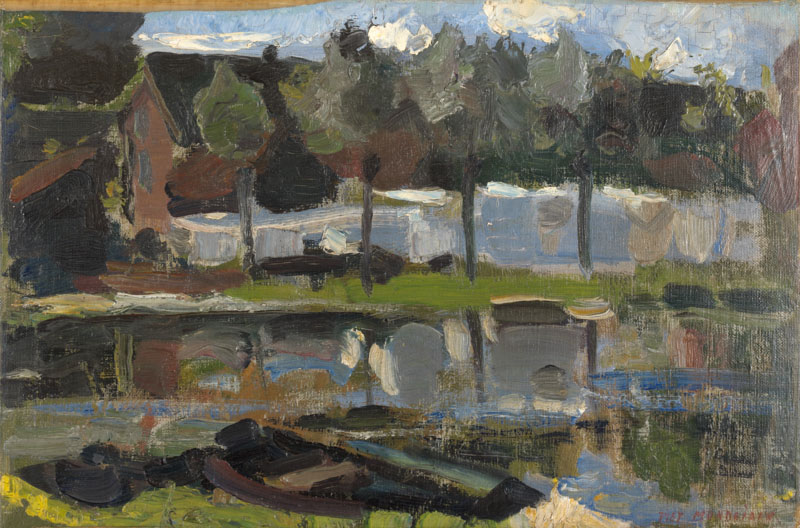
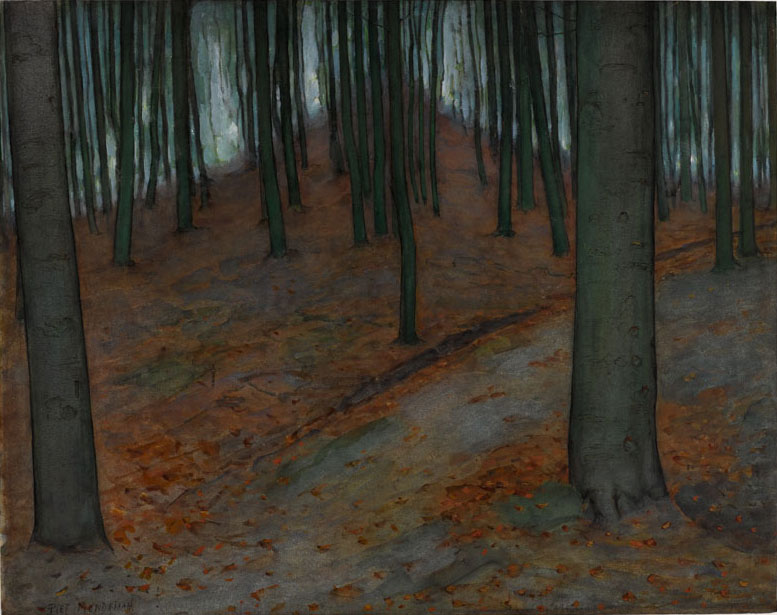
The earliest painting in the exhibition depicts a woman with a spindle in front of a table. Of particular interest here is the area behind the woman, where white tiles can be seen. Some think they can already make out a design element in these tiles which, many years later, would become characteristic of Mondrian’s neoplastic works.
